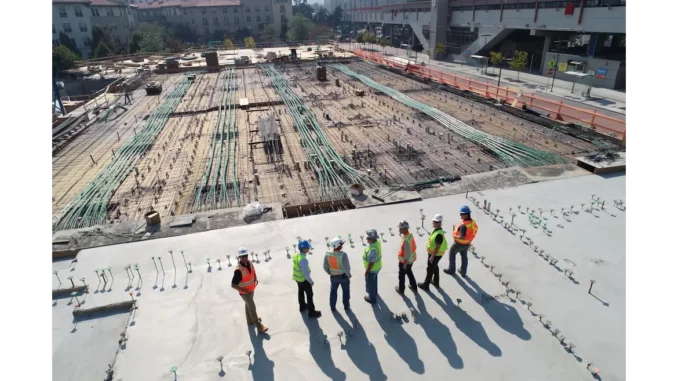
In the realm of construction, the choice of project delivery method is a fundamental decision that shapes the collaboration, communication, and responsibilities of all stakeholders involved. The selection of an appropriate delivery method can significantly influence the efficiency, cost, and quality of a project. The six predominant delivery methods prevalent in the construction industry are Design-Bid-Build (D-B-B), Design-Build (D-B), Construction Manager at Risk (CMAR), Construction Management Multi-Prime (CMMP), Public-Private Partnership (PPP or P3), and Integrated Project Delivery (IPD). Each of these methods offers distinct approaches, benefits, and challenges, making it imperative to align the choice with the specific demands of the project.
Successful low-energy building design hinges on careful planning. Focus360 Energy can help.
The Design-Bid-Build (D-B-B) method, often regarded as the traditional approach, involves the owner contracting separately with a design team and a general contractor. The design team is tasked with developing comprehensive contract documents, which are then used to solicit bids from contractors. This competitive bidding process can drive down project costs, a primary advantage of this method. However, a notable drawback is the substantial financial commitment required from the owner during the design phase, with no firm construction price guaranteed until the bidding is complete. Despite this, the clear separation of design and construction responsibilities can facilitate a transparent and competitive project environment.
Conversely, the Design-Build (D-B) method consolidates both design and construction responsibilities under a single contract with the owner. This approach aims to streamline communication and enhance project efficiency by providing a single point of contact. The flexibility of the Design-Build method allows for either an architect-led or contractor-led project based on complexity. While this method can expedite project timelines and foster better collaboration between design and construction teams, it may also introduce conflicts of interest. The contractor’s dual role might lead to prioritising cost-saving measures over quality, posing potential risks to the project’s overall integrity.
The Construction Manager at Risk (CMAR) method positions a construction manager as the owner’s representative, responsible for overseeing both the design and construction phases while adhering to a guaranteed maximum price contract. This method can significantly enhance cost control and facilitate improved communication among the owner, design team, and contractors. Nevertheless, it places considerable responsibility on the construction manager to manage the project diligently and prevent cost overruns, which could otherwise burden the owner financially.
The Construction Management Multi-Prime (CMMP) method empowers the owner to act as the general contractor, directly contracting with the design team and key subcontractors. This method can be advantageous for owners with substantial construction experience, enabling them to exert greater control over the project and potentially reducing payment issues for subcontractors. However, for owners lacking the requisite experience, this method can present significant challenges in managing and coordinating the various aspects of the project effectively.
Public-Private Partnerships (PPP or P3) represent a collaborative venture between a private company and a government entity, often utilised for infrastructure and affordable housing projects. These partnerships benefit from the amalgamation of public funding and private-sector expertise, promoting efficient project execution. Nonetheless, PPP projects are susceptible to delays and disruptions stemming from shifts in governmental priorities. Additionally, managing bond claims can be complex, presenting further challenges for contractors in securing payment for completed work.
The Integrated Project Delivery (IPD) method is distinctive in that it integrates all project participants under a single contract, fostering a collaborative environment from the project’s inception. This method promotes innovation and shared risk among stakeholders, which can lead to enhanced efficiency and reduced project timelines. However, the IPD requires meticulous planning during the early stages and may prove challenging to adapt as the project progresses.
Selecting the most suitable project delivery method necessitates a careful consideration of several factors, including the nature and complexity of the project, the owner’s risk tolerance and control preferences, the project timeline, and budgetary constraints. The choice of delivery method fundamentally influences the contractual relationships and the degree of control exerted by the owner and other stakeholders. By aligning the chosen method with the project’s unique characteristics and the expertise of the participants, stakeholders can optimise project outcomes and mitigate potential risks.


Be the first to comment